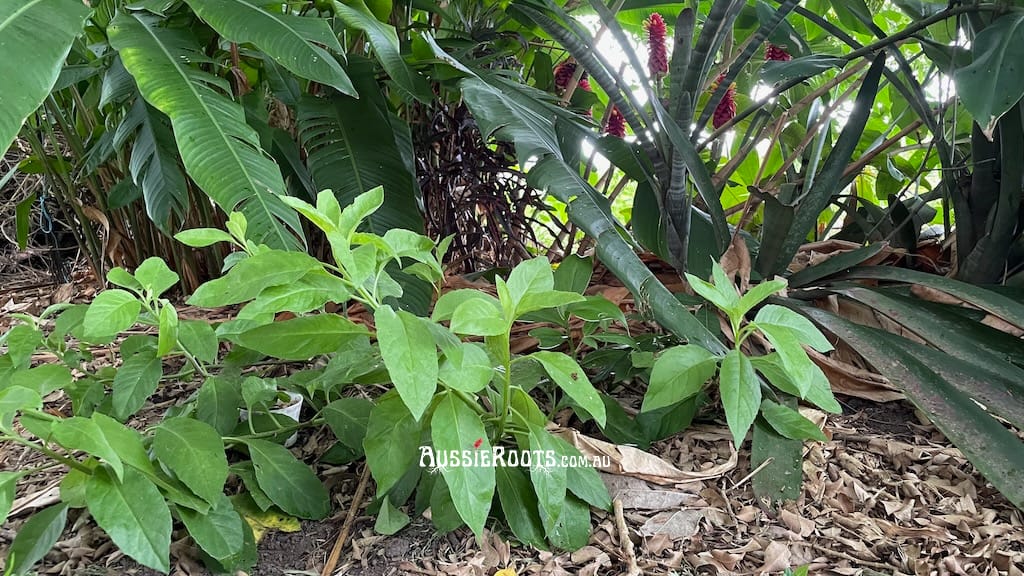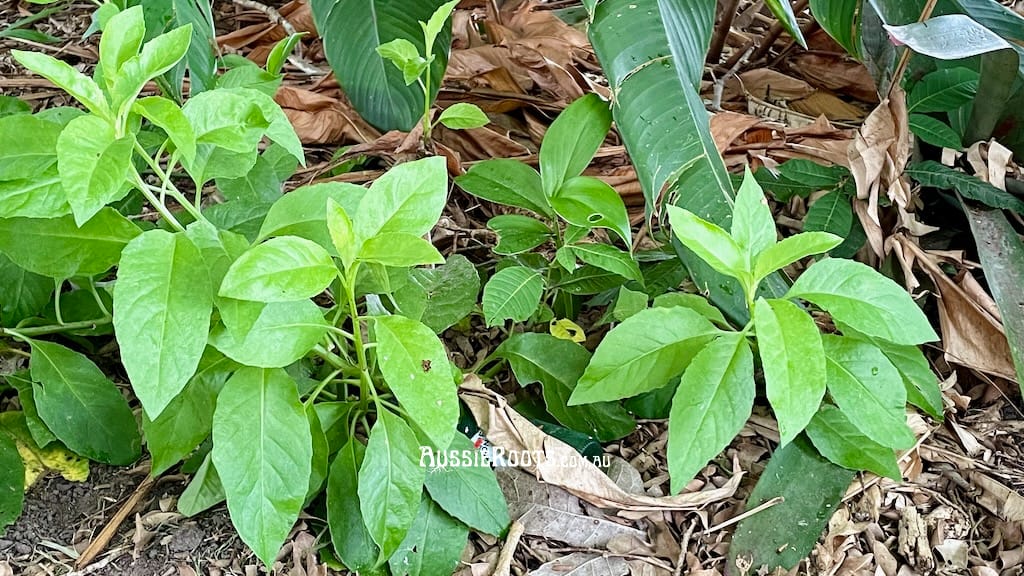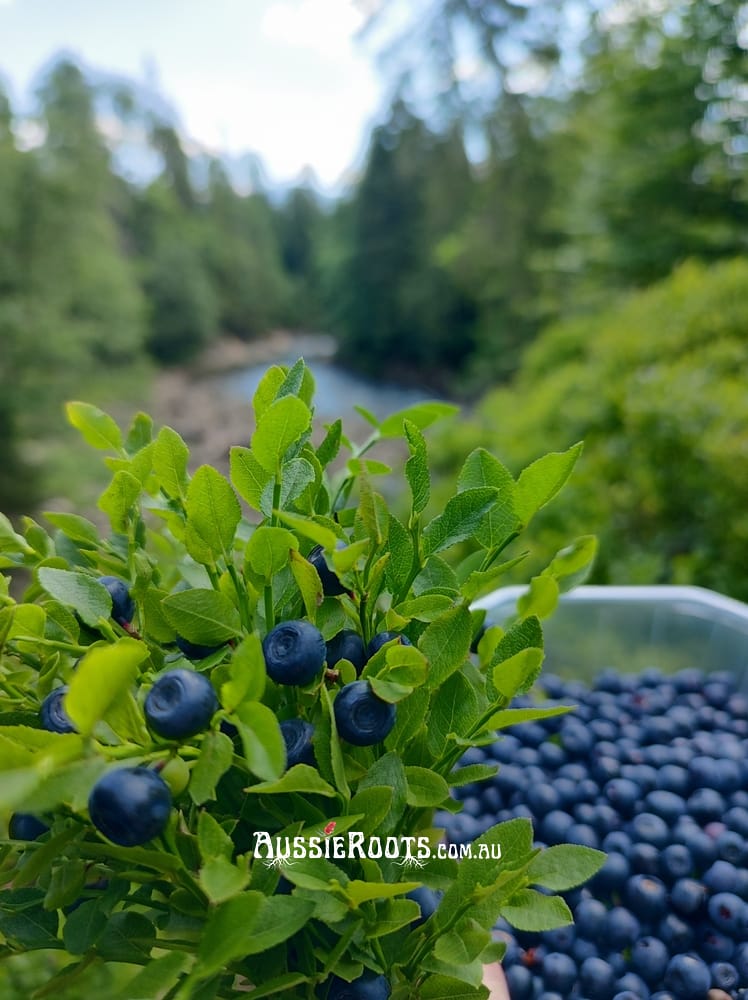Longevity Spinach Plant Profile (Gynura procumbens)
Something that’s looking fantastic in the garden at the moment is my longevity spinach (Gynura procumbens). I generally call it Sambung but ‘longevity spinach’ seems to be more commonly used. It’s not the prettiest plant in the garden. You might even mistake it for a weed! Despite being so unassuming looking, this is a plant with superpowers. Some people actually call it ‘Leaves of the Gods’! I’ll tell you why it’s in my garden.

Growing Longevity Spinach

Longevity spinach, or Sambung, isn’t the easiest plant I grow. I find it a bit fickle. It seems to love the warmth and doesn’t mind the humidity here in north Queensland. It prefers good soil with regular watering.
I planted it in a section of the garden where the soil gets a little compacted (especially after a big rain) and Sambung doesn’t like that. My plant is near a big ginger (Heliconia psittacorum ‘Tropics’), which loves to suck up all the moisture, and a lot of the nutrient available. It was struggling a little. I’ve since added lots of mulch and it is responding really well.

The Heliconia has been helpful because its big leaves make excellent mulch! It grows like crazy so there’s always plenty to cut and use for mulch. One thing longevity spinach really appreciates in Queensland is shade. Don’t plant it in full sun, it won’t make it.
My plant is in full shade. One corner of the garden blocks the morning sun with tiger grass, two bananas (Goldfinger and Dwarf Ducasse), a mulberry, cassava, and a bamboo. The garden is in an east-west direction, and it’s slightly curved so the other side blocks the afternoon sun. On top of that, there is a huge fig tree that creates a shaded area at least 30mx30m!
I think the longevity spinach would appreciate a little more sun, but it’s happy enough. I’m leaving it here for the moment, keeping the mulch up! It’s big enough now to start propagating, so I can experiment with different positions in the garden.
Taste

Sambung isn’t delicious on its own. I’ve seen it described as a mild, green bean flavour. That is true, somewhat, for the very young leaves. Somewhat. My daughters regularly eat a leaf. My youngest describes it as chives. My oldest describes it as ‘yuck.’ I’m not a huge fan. It’s not the worst taste for a spinach alternative, but it’s still quite bitter in my opinion.
Even though it’s not my favourite snack in the garden (hello, fresh bananas!), I try to eat a leaf every single day. It’s called longevity spinach for a reason! Let’s look at the health benefits next.
Why I Eat a Leaf Every Day

The name itself holds a clue. People believe that eating longevity spinach contributes to a long, healthy life. As always, I like to refer to Isabell Shipard ‘How Can I Use Herbs In My Daily Life‘ book for specific information. It’s actually the reason I bought the plant in the first place! Let’s look at the benefits.
Longevity spinach contains a bunch of vitamins, including A, B1, B2, B6, C, and E. It also has calcium, iron, phosphorus, and potassium. Isabell lists ten actions for the plant:
- Alterative
- Antihistamine (must try a leaf on an insect bite!)
- Antihypertensive
- Anti-inflammatory
- Antimicrobial
- Antioxidant
- Antipyretic
- Antiviral
- Diuretic
- Tonic
That’s quite an arsenal! ‘How Can I Use Herbs‘ has a full write up of all the benefits of adding Sambung to your diet, but I’ll add some of my favourite benefits and research sources below.
Longevity Spinach Research

- Blood Sugar Regulation: Several studies have suggested that Gynura procumbens may help in managing blood sugar levels, making it potentially beneficial for people with diabetes.
- Cholesterol Management: Research indicates that this herb might play a role in reducing bad cholesterol levels while improving good cholesterol, promoting heart health.
- Antioxidant Properties: Gynura procumbens is known for its antioxidant properties, which help in neutralizing harmful free radicals in the body.
- Anti-Inflammatory Effects: The plant has been used traditionally to reduce inflammation, and some studies support its efficacy in reducing inflammatory markers.
- Anticancer Potential: Early research suggests that Gynura procumbens might have compounds that can inhibit the growth of certain types of cancer cells.
- Liver Protection: There’s some evidence to suggest that the herb can protect the liver and improve liver function, possibly due to its antioxidant content.
- Wound Healing: Traditionally, Gynura procumbens has been used for wound healing, and some studies have looked into its effectiveness in promoting tissue regeneration.
- Fighting Bacteria: This research shows that Gynura procumbens leaf extract is effective in fighting bacteria and reducing inflammation without harming the body.
These are just some of the reasons I have a leaf a day. Are you convinced yet?
Significance in Traditional Medicine
Throughout history, Gynura procumbens has been highly valued in traditional medicine for its therapeutic properties. It has been used in Asian cultures for its ability to support overall health and wellness.
In traditional Chinese medicine, longevity spinach is believed to promote blood circulation and strengthen the immune system. It has also been used to alleviate symptoms of diabetes, hypertension, and other ailments. Its medicinal properties have made longevity spinach an important part of traditional healing practices.
Propagating Sambung
You can propagate Gynura procumbens in a few different ways.
- Cuttings. By far the easiest method. Cuttings will root readily in water, or you can plant them in soil. Take a stem cutting from a healthy plant, at least 15cm long. Each cutting should have a minimum of 3 nodes (where the leaves attach). Remove the lower leaves and put in water in soil.
- Seeds. Longevity spinach is hard to grow from seed. I haven’t been succesful. Stick with cuttings if you can! If you do want to try seeds, collect them fresh if possible. Sow directly in well-prepared soil. Keep moist until the seedlings appear.
Common Problems
Growing longevity spinach is very rewarding, but it may come with its fair share of challenges. Here are some common issues and their solutions:
- Insects. Aphids and snails are common pests that will affect your longevity spinach. I prefer to handpick them off rather than use any insecticide. A decent spray of water also sorts many insects out.
- Soil troubles. It does not like wet, compacted roots. It also doesn’t like being dry. It can be tricky to get the soil right, which is where plenty of mulch comes in.
- Food. Sambung loves nutrients. You may have noticed in some of my photos that some leaves are lighter than they should be. It would love some nitrogen! I have a comfrey plant that is ready to propagate, so I will plant some comfrey near it. In the meantime, I will mulch with some comfrey leaves and add some manure.
- Pruning. This isn’t really a problem as such but I did want to mention it. Sambung gets sprawly! Keep it pruned so it stays nice and bushy.
How to Eat Sambung

You can simply pick a fresh leaf of your plant every day and eat it. It’s not delicious but it’s certainly easy! Some other ideas for using longevity spinach in your meals are:
- Add some leaves to salads
- Add to smoothies
- Juice it with some oranges, apples, and a quarter of a lemon
- Add it to stir fries like you would spinach (don’t overcook!)
- Add to soup
- Pesto. It makes a great pesto! I don’t use it on its own but it’s yummy with basil or parsley.
- Anything else you’d typically use spinach for
I believe many plants are invaluable in a Queensland garden, but longevity spinach is definitely near the top. Once it’s in the right position, it’s fairly low maintenance, doesn’t look too bad, and it’s packed full of health benefits.












